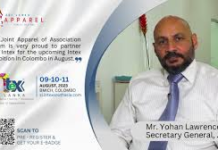https://www.freepressjournal.in/analysis/new-india-will-drive-renewable-agenda-for-the-world
Tata Power and Sustainability
To tackle the issues of Climate Change, Tata Power has developed a holistic Sustainability Model. Free Press Journal, in association with SIES ASC College and JBIMS, organised a webinar to talk about it
“The world must come together to confront climate change. There is little scientific dispute that if we do nothing, we will face more drought, famine and mass displacement that will fuel more conflict for decades,” said Barack Obama.
If this rate of climate change is not arrested, it will impact future generations in ways that will be hard to mitigate.
Edited Excerpts:
RN Bhaskar set the context for the webinar, saying that sustainability is the current buzzword and that he was privileged to get an insight into what Tata Power was doing in Uttar Pradesh, Bihar and Odisha to transform India through India’s largest rural electrification and sustainability project. He then invited Madan Sabnavis to give a short insight into what he expects from sustainability and the need of the economy.
Sabnavis stressed on the fact that even if India grows at 8%, 9% or 10% may not really mean too much unless we’re also talking in terms of protecting the environment and using more sustainable means to get about this growth. He said that the power sector had four constituents.
One is the users of electricity, second the power generators or power sector, third the central government, which has a plethora of policies and fourth the state governments, who have their own set of ideologies and policies.
He excluded households because they really don’t have much of a say on matters relating to sustainability. Most of the power plants in India are coal-based. And if it is decided to switch over to some other medium then how will the whole supply chain be adapted, he questioned.
Sabnavis asked, “If we are talking of sustainability, the logical thing is that at some point of time, it becomes fairly reactive. So how do the power companies actually foresee such a situation?”
Dr. Praveer Sinha responded to the issues by saying, “When we are looking at long-term viability, long-term solutions for the power sector, we need to consider all these aspects because then only we will come up with these solutions, which are sustainable and can be implemented on the ground.” He then explained ‘sustainability’ with the help of a slide show.
CLIMATE CHANGE DEBATE IS ‘HERE AND NOW’
The recent report that has come shows that we are in zone red and that is we are in danger with whatever is happening. If we do business as usual, we will have huge challenges. Many of the cities in our country will get devastated, they will get flooded, there will be heatwaves, very high-intensity heat waves, food grain production will get impacted and human life will get impacted to a large extent.
We’ve seen globally how the ocean levels are going up, how the Arctic is getting impacted. And in our country too we have seen in the last few years, how the changes are happening. We have had cyclones on both the east coast and west coast of India, the temperature variations that are happening are very large. The rainfall, which used to be staggered is now in intense downpours.
We are getting the same quantum of precipitation that takes place, but in very short periods and that leads to flooding and landslides. So there are a whole lot of changes, which are happening.
I think this is something that we need to be very serious about. And serious interventions are required by everyone. Whether they are corporates or governments or individuals, we need to change our lifestyle.
We need to keep our heads down and be very focused to come up with sustainable solutions whereby our requirements of life can be met. Our country has taken very bold steps. Very bold announcements have been made, that by 2030, we will have nearly 500 gigawatts of non-carbon. Today in our country, we have only 150 gigawatts of non-carbon power. We need to add 350 gigawatts [by 2030]. So, a huge task before us.
SUSTAINABILITY LEADERSHIP THROUGH UNSDG
We have also seen that globally, investors, banks, lenders, everyone is now insisting that you have to have a very clear-cut agenda and roadmap for decarbonisation. And I think, fortunately, the solutions that we are now getting are becoming very cost-effective solutions and decarbonisation needs to be enhanced and increased as we move forward with better technology, better solutions, and better integration — with storage and the other sources of energy.
We also have to ensure that when we decarbonize, how do we also do distributed generation? There is again an opportunity relating to how we can produce power locally, whether it is in urban areas, as an industry, as a commercial establishment, as a domestic consumer or a residential consumer rooftop solar’s or even ground-mounted solar — how can we do that? How we can do it in villages?
The government has the PM-KUSUM programme, but how do we implement this and do it quickly? Similarly, in villages, we should look at the opportunity to have microgrids over there, where one can generate power and meet the local requirements rather than bringing it over large distances. How do we make them commercially viable? Because while these solutions are there, it’s a challenge to make them commercially viable. But it can become a great solution and a great catalyst in the economic activities that can be carried out in villages.
This is because energy availability means that you can carry out many things which today you can’t. So, I think there is a great opportunity for us to create economic activity in villages and thereby use the localized generation of power to create this. This is socio-economic change.
TATA POWER SUSTAINABILITY ASPIRATIONS
As a company, Tata Power has developed a very clear-cut roadmap about what we need to do. The best way was to look at what are the 17 sustainability development goals (SDG) and where do we stand? So, we looked at the three areas that we will work very closely on the SDG, seven and 13, which talks about decarbonisation, and how do we produce electricity locally.
We are also working on thought leadership because many of the things that we do today will be the first-ever time in the country and we need to do that.
Three years back, we took a call that we will become net-zero carbon in 2050. We also said we will not put any more coal-based plants whether it is a Brownfield or Greenfield plant. We got very good opportunities during the last two years when a lot of these stressed assets were available at a very low cost, and we could have taken them and would have gotten better results and better yields.
But we took a stand that we don’t want to add coal-based plants based on our earlier decision that we will become a net-zero carbon by 2050. We’ve now further improved it and come down to 2045. So we need to really demonstrate leadership, both in action and in talking about it and the message that this is not something that we can brush under the carpet.
SECTOR TRANSFORMATION: AN SDG ROADMAP FOR UTILITIES
We need to also look at the SDG roadmap for utilities. I had earlier mentioned that in terms of thought leadership, how we were the first utility in the country, in fact, globally to develop our SDG roadmap and got it published in UNSDG which is the World Organization that carries out such types of studies for all types of companies globally.
We are also now working with other utilities globally, on how we can have common interest groups and how we can learn from each other in terms of our practices and processes technologies. We are working with many of the utilities outside India and I’m sure seeing the type of initiative and work that is being done by us in Tata Power there will be other utilities who will take a call and follow those initiatives.
GOVERNMENT INITIATIVES
I think the government has taken a lot of initiatives for renewable power. The government has taken initiatives like Mission 500, the PM-KUSUM programme for agriculture pump sets, the RPO obligations for state Discoms, as well as those who are producing their own energy the group based plants and others.
So, everyone will have a renewable power purchase obligation. And so to that extent, all industrial commercial Discoms, everyone will have a target which they will have to meet.
Otherwise, they’re stiff penalties and the other areas that the government is trying is how do we make the whole rooftop business in urban areas or even for industries and others much simpler to implement and use that.
The government has been coming up with policies and incentives from time to time. It is doing a lot of things from their side to make things happen. This is the central government. Some of the state governments also have to support the regulatory mechanism which is again in the states they need to support so I think the collaboration and the working together of some of the stakeholders will help us to make this universal usage of renewable power.
I also strongly believe that the new India will be driving the renewable agenda for the world.
REACHING OUT TO 10,000 VILLAGES
We are planning to touch 10,000 villages with microgrid power maybe by 2026 or 2027. Earlier we were planning by 2025 but the last two years were affected by the pandemic. We started actually in February 2020 and then just within one month of that the pandemic impacted our operations and we could not scale it up.
But now I think things are okay and we don’t have another way, we should be able to scale it up very quickly.
GOOD STORAGE SYSTEM FOR RENEWABLES
In storage, there are various technologies. Each of these technologies has a certain cost point.
So, there are technologies which will give you eight hours to 10 hours of storage, which is good enough, but it’s a little expensive. So storage is today available and a number of places we are ourselves using storage and it is working very fine that various technologies, various chemistries of battery and then there’s absolutely no problem in using these storage solutions.
But there is a cost and you want green power. There is a little extra cost that you will need to incur. That’s your contribution to save the nature, and save the environment.
ELECTRICAL VEHICLE CHARGING
This is a solution for mobility where people can have the flexibility of charging any time of the day and charging anywhere. So large solutions have been developed whereby you can decide when you want to charge where you want to charge. The seamless experience of charging is there.
This is there not only in cities but also on the highways and expressways. We are also working on 100% renewable EV charging.








































COMMENTS